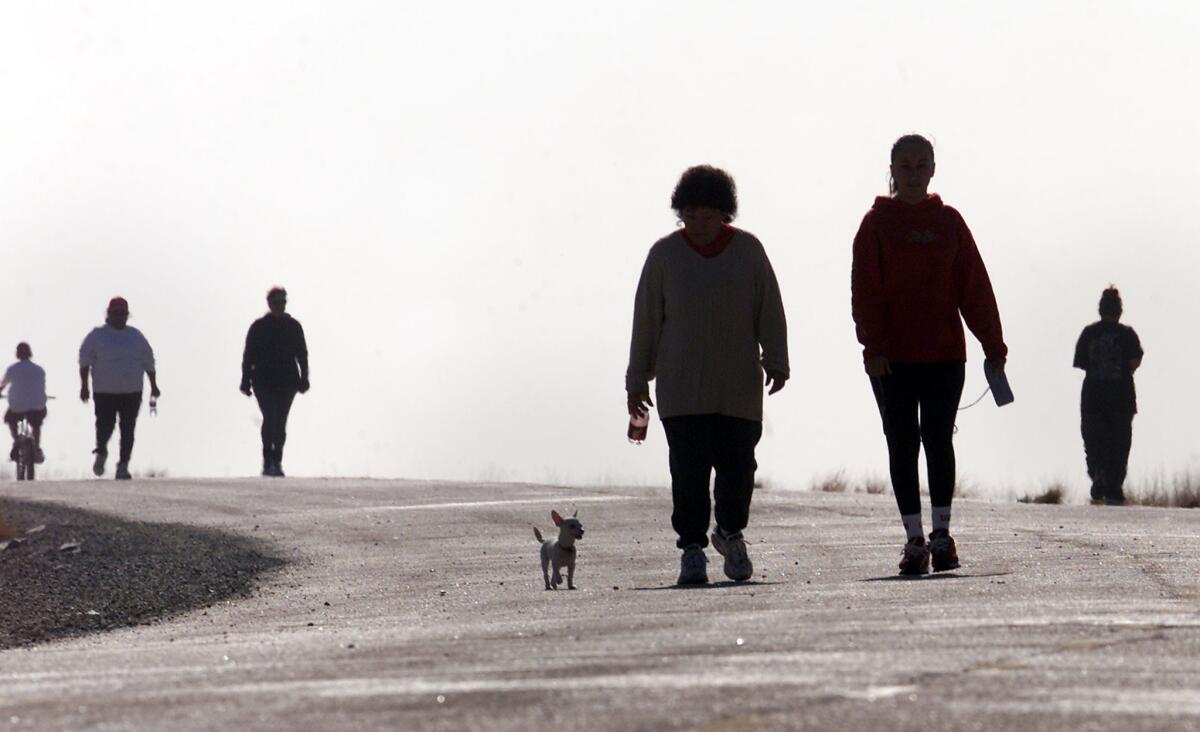The laziness imperative: Why zealous exercise burns fewer calories than we think

As we walk, we are constantly adjusting our gait to make energy expenditure more efficient. Makes sense, right? Unless the whole point of walking is to burn extra calories.
We modern humans live in a world in which calorie-packed food tempts us from all directions, and a dazzling array of conveniences and conveyances relieves us of the need to exert much physical effort.
These are problems, we tell ourselves: These modern realities are making us fat, sedentary and unhealthy. But deep down, we know we love them. Because we humans are evolved to gobble up the most calories we can get with the least possible expenditure of energy.
And then (because we’re modern), we go to the gym to try to work it off.
But even when we make the effort to exercise, says new research, the power of our pre-modern selves will not be denied. We may walk, run, swim or dance in a determined bid to burn off calories. But our bodies, obeying a more primitive impulse, are preserving energy at every turn.
A study published Thursday in the journal Current Biology finds that the evolutionary imperative of minimizing effort quite literally influences every step we take.
The authors of the new study put people in robotic exoskeletons -- wearable stepping aids that bristle with sensors and motors -- and measured a key aspect of their gait (the frequency of their step) while the subjects walked on a treadmill. The researchers observed that pedestrians quickly and unconsciously find their preferred stride: the one that expends the least amount of energy per step.
The researchers then used the intrusive robotic device to briefly perturb subjects’ step frequency. Initially, when walkers were unexpectedly nudged out of their comfort zone by the exoskeleton, they worked harder to maintain the stride they had established at the outset.
That changed, though, when researchers gave the subjects several minutes to explore different walking strategies on their own. When researchers started the treadmill again and resumed their measurements, the walkers immediately adopted major changes in their step frequency -- shifting what had previously seemed like a natural preference.
The result of the shift: They expended fewer calories than if they had persisted with their earlier gait.
The researchers tried repeatedly to get walkers to adopt different gaits -- making them walk to the rhythmic ticking of metronomes set at faster or slower step frequencies than they had chosen on their own. Knocked repeatedly out of their comfort zones, subjects repeatedly adapted in ways that minimized their expenditure of calories.
In terms of calories unburned, the changes that subjects made to their gaits were very small: shifting to a new step frequency whittled calories expended, on average, by just 5%. But over a lifetime of walking, that adds up. And when you’re exercising with the aim of burning maximum calories, it’s a painful irony to be reminded that your body is working to thwart your efforts.
If you have ever shaken your head at a runner -- or an athlete of any kind -- whose form is incomprehensibly wrong, you know that we have strong intuitions about efficiency in movement. Our notions of athletic beauty -- of physical grace or good form -- may be an aesthetic choice borne of our impulse toward laziness. We are programmed to want to move efficiently -- and perhaps to admire efficient movement in others.
“Energetic cost,” write the authors of the new research, isn’t just an incidental outcome of physical activity. Our evolved preference for expending as little energy as possible in movement “also plays a role in continuously shaping” the ways in which we move.
Follow me on Twitter @LATMelissaHealy and “like” Los Angeles Times Science & Health on Facebook.
ALSO:
Diabetes nation? Half of Americans have diabetes or pre-diabetes
Scientists asked six men to eat 6,000 calories a day in bid to fight obesity
American adults get a D in science; 22% confuse astronomy and astrology





